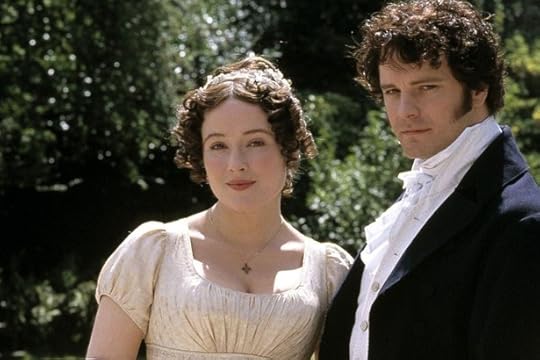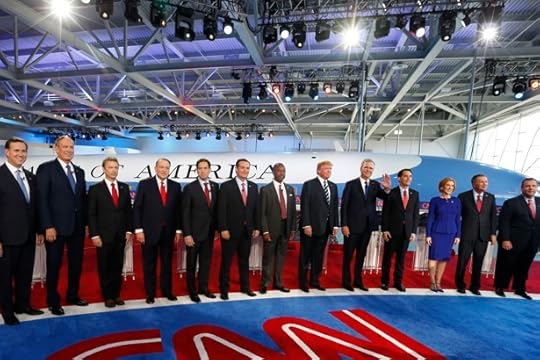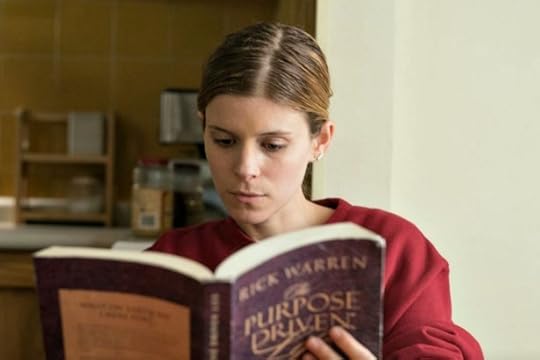Atlantic Monthly Contributors's Blog, page 344
September 18, 2015
‘Go On Through’: Croatia Won't Register Migrants

Croatia says it is unable to cope with the flow of migrants entering the country, and won’t register any more asylum-seekers.
Croatian PM to #refugees: You can pass through Croatia. Go on through. Not because we don't like you but because your destination is north.
— Vlada R. Hrvatske (@VladaRH) September 18, 2015
Croatian PM Milanović: We can't register people anymore. What else to do but to let them go where they want to go? #refugeescrisis #refugees
— Vlada R. Hrvatske (@VladaRH) September 18, 2015
Around 14.000 #refugees entered Croatia by 9 AM http://t.co/iWCb9yk195 #refugeescrisis
— Vlada R. Hrvatske (@VladaRH) September 18, 2015
The tweets are from the government’s official Twitter account.
Earlier Friday, Prime Minister Zoran Milanovic said: “Croatia cannot and will not accept this burden anymore.”
This week Croatia promised free passage to migrants after neighboring Hungary closed its borders to the asylum-seekers. But that move has resulted in as many as 14,000 people entering the country of 4.2 million people. Most of them are trying to reach Germany, which expects 800,000 asylum-seekers to enter the country this year.
“Croatia’s plan B is to no longer register and accommodate migrants,” the prime minister said.
Europe’s most severe refugee crisis since World War II has bitterly divided the EU. Countries like Germany and Sweden have been more welcoming of the migrants; newer EU members such as Hungary have not. EU ministers were unable this week to agree on a plan to distribute up to 160,000 migrants among the bloc’s member states—a failure that German Foreign Minister Frank-Walter Steinmeier emphasized in an interview with Passauer Neue Presse daily.
“It just cannot be that Germany, Austria, Sweden, and Italy carry the burden alone,” he said, according to a translation by Agence France-Presse. “That’s not how European solidarity works. And if there is no other way, then we should seriously consider to use the instrument of a qualified majority.”
Here’s how AFP explains the qualified majority:
The 28 EU members usually aim for compromise and consensus on policies. But under the tool of a qualified majority vote, binding decisions can be taken if 55 percent of nations representing 65 percent of the total population agree.
A number of eastern European countries, notably Hungary, Poland, the Czech Republic and Slovakia, have rejected the idea of accepting a share of migrants, under national quotas that reflect populations and economic strength.
You can read the rest of our coverage of the refugee crisis here.









September 17, 2015
Another FIFA Own Goal

There’s big news in the world of soccer: FIFA, the sport’s governing body, says secretary general, Jérôme Valcke, has been “released from his duties” amid allegations published in the Guardian that he was part of a scheme to sell tickets for the World Cup above their face value.
Here’s the FIFA statement, in full:
FIFA today announced that its Secretary General Jérôme Valcke has been put on leave and released from his duties effective immediately until further notice. Further, FIFA has been made aware of a series of allegations involving the Secretary General and has requested a formal investigation by the FIFA Ethics Committee.
The Guardian reported Thursday that Valcke, the right-hand man of Sepp Blatter, FIFA’s chief, “was to be the beneficiary of an agreement to sell the tickets at inflated prices.”
Valcke has denied the allegation, which were made by a consultant at a company that struck a deal—subsequently cancelled—with FIFA to sell tickets for the 2014 World Cup. But the newspaper noted that the documents it had seen “are incomplete, selective and could easily be open to other interpretations.”









Behold, the Geographically Accurate Tube Map

The London transit authority’s rarely publicized, geographically correct map of the London Underground subway system is making the rounds, and it’s a little unsettling.
More From Quartz You Can No Longer Buy Bus Tickets With Cash in London Watch a Live Map Showing Londoners Swearing About the Latest Tube Strike London’s Tube Is On Its Way to Going DriverlessOn this map, disclosed by Transport for London in response to a Freedom of Information Act request, all of the Tube’s noodle-like contours are laid bare. It’s accurate, yes—at last, the Northern Line is revealed for the twisted mess it is! But it’s also disorienting, as the clean, bold lines of the iconic Tube map melt away.
When it comes to its transit map, London decided long ago that it was willing to forego accuracy for simplicity and design.
 The current Tube map (Transport for London)
The current Tube map (Transport for London) But for the first few decades of its existence, the city’s (much smaller) underground system was mapped out geographically.
An early London Tube map c. 1908 pic.twitter.com/kc0Dgse8nw
— Historic London (@LDNhistory) September 12, 2015
A draftsman named Harry Beck came up with the prototype of the current design in 1931. It was all straight lines, with 45- and 90-degree angles only, a modernist masterpiece divorced from the chaotic reality of the streets above. Transit planners initially rejected the map, saying its failure to allow Londoners to gauge real-life distances between stations would be too confusing for riders. A trial run proved them wrong.
Beck’s design principles went on to inform many of the world’s other transit systems. Paris’s current map resembles one Beck designed for fun in the 1940s. Washington, D.C.’s Metro sports decidedly Beckian angles. And the upcoming 24-hour Night Tube in London will have a map that follows on from the daytime version:
How London’s New Night Tube Map Was Made http://t.co/iJ3mpyFWnW #london #tube #londontube
— Stepan Pervan (@StepanPervan) August 15, 2015
But the design-first approach doesn’t work everywhere. In 1976, New York’s Metropolitan Transportation Authority commissioned the designer Massimo Vignelli to revamp the subway map. His colorful end result shrank Central Park and distorted Manhattan’s geography in exchange for clean lines and angles like London’s—and New Yorkers hated it.
Why mess with a city whose easily navigable grid system—above 14th Street, anyway—already made perfect sense? Vignelli’s contribution was yanked in 1979, replaced with a version of the messy but geographically-accurate version in use today.
A rare interview with Massimo Vignelli on type, his NYC subway map design & what is important in #design: http://t.co/97jhpQU9Oi
— Stokely Design (@StokelyDesign) March 24, 2015









Should Israel Be Declaring War on Rock-Throwing?

One perpetual challenge of writing and reading about the Israeli-Palestinian conflict is that the amount of context needed almost never fits the space available.
Let this sentence serve as an example: Earlier this week, a 64-year-old Israeli motorist was killed when he lost control of his car after it was struck by rocks thrown by Palestinians on a road in East Jerusalem.
And let this too-slim headline serve as an another example:
"Actress Sharon Tate dies as knives stab her body multiple times." pic.twitter.com/cOa14zk4BH
— Sohrab Ahmari (@SohrabAhmari) September 16, 2015
Here comes another one: The death of the man came amid days of intense and increasingly routine clashes at the Temple Mount—the most-widely used term for the Jerusalem site—which is sacred to both Jews and Muslims. (For more on those tensions, here’s an explainer from last year.)
Following the attack, Israeli Prime Minister Benjamin Netanyahu held a meeting with security and defense officials, along with the mayor of Jerusalem, and announced he was “declaring war” on rock throwers.
“New measures debated at the meeting included changing the protocol for open-fire orders on rock throwers, establishing a minimum sentence for rock throwers, and levying a heavy fine on minors throwing rocks and their families,” the JTA reported.
Like the story of the motorist and the conditions of the renascent clashes in Jerusalem, the question of whether a war could or should be declared on rock-throwing is one that contains plenty of layers and requires much background.
The canon on the act of stone-throwing in the Middle East goes back at least as far as the Bible, where David bested Goliath with a slingshot-propelled stone. Throughout the history of the Israeli-Palestinian conflict, both sides have sought to portray themselves as the David; Israel, a small country surrounded by several hostile Arabs countries that have repeatedly sought its elimination, and Palestinians, overmatched while resisting and confronting well-armed Israeli soldiers.
The quest for symbolism doesn’t end there. Writing of the children who throw stones at Israeli soldiers in the Palestinian village of Beit Ommar, Jodi Rudoren described the perception of rock-throwing as a“rite of passage and an honored act of defiance.” She added, “The futility of stones bouncing off armored vehicles matters little: Confrontation is what counts.”
While this week’s episode in East Jerusalem shows that stone-throwing can be fatal for the target, so can it be for the attacker. Back in July, The Washington Post noted a case in which an Israeli commander shot and killed a 17-year-old Palestinian, who was part of a group throwing rocks at an army vehicle. The commander claimed he acted in self-defense and feared for his life while Palestinian witnesses and Israeli human-rights activists argued that the teenager posed “no lethal threat.”
With an increase of protests in Jerusalem in mind and a Hamas-declared “Day of Rage” set for Friday, rocks seem a likely part of the forecast. Given their frequent presence, will declaring a war on rock-throwers make things better or worse?









The BBC Is Creating a Netflix-Style Streaming Site

It’s always been a tricky task to watch some of Britain’s best television unless it got picked up by Masterpiece Theater. But the international borders of broadcasting are somewhat eroded by the news that the BBC plans to launch a Netflix-style streaming service offering programming past and present. Some of its most popular shows like Doctor Who and Sherlock, which already air in this country, won’t be included, but there’s plenty more to watch: Few networks around the world can boast the kind of back catalogue the BBC has.
Related Story
Scandal at the BBC: A Sign of Crisis in British Media?
The move is actually a revenue grab for the government-supported network, which is largely funded by public license fees paid by British viewers. Much like PBS in America, the BBC has seen its budget cut since the 2008 recession and is looking to raise money (roughly £3.7 billion) outside of the country, since it is mandated to air ad-free in the U.K. Though few details are available, the BBC will probably be offering a monthly subscription service, similar to the recently launched HBO Live and CBS Express streaming sites, which seek to appeal to younger “cord-cutting” TV watchers.
The archives the BBC (affectionately called “The Beeb” in the U.K.) could offer up are staggering to contemplate. The network has offered original TV programming since 1929, starting only three years after the invention of the television, and it’s impossible to summarize its greatest hits. Yes, there’s many a famed costume drama in its vaults, along with legendary sitcoms and sketch shows. There are some of the earliest and most influential pieces of science fiction, and gritty real-life dramas. Highlights might include Andrew Davies’s 1995 adaptation of Pride and Prejudice starring Colin Firth and Jennifer Ehle, or Monty Python’s Flying Circus, or Ricky Gervais’s The Office, or the 12 glorious episodes of Fawlty Towers, or the epic masterpiece of social storytelling that is Peter Flannery’s Our Friends in the North.
But the real allure of subscribing would be a barrel you could never scrape the bottom of no matter how hard you tried. That’d probably be worth a few bucks a month, especially in the coming days of à la carte television subscriptions, where viewers will pick and choose the networks they want to subscribe to online, rather than pay for a massive bundle of cable channels. In terms of sheer history, the BBC is unparalleled. Tapping its archives could offer extraordinary benefit for both the network and its many global fans.









Younis Abdurrahman Chekkouri: The Latest Freed Gitmo Prisoner

In December 2001, as U.S. forces closed in on Tora Bora during the invasion of Afghanistan, Younis Abdurrahman Chekkouri fled, but he was caught by Pakistani forces, according to U.S. officials. Then he escaped again, during a prisoner riot, but was recaptured. On January 1, 2002, he was handed over to U.S. forces at Kandahar. Five months later, on May 1, he was moved to Guantanamo Bay, where he was imprisoned until Wednesday. He was never charged with any crime.
The U.S. government announced Thursday the Moroccan had been transferred back to his home country—five years after he was approved for release. As Agence France-Presse notes, there’s no indication whether Chekkouri will be imprisoned in Morocco, put under house arrest, or simply set free. He was not immediately freed upon arrival in Morocco.
Chekkouri’s transfer brings the population of the prison to 115. President Obama has been pushing, with more or less urgency, to close Guantanamo since he became president, but he’s encountered stiff resistance from Republicans in Congress, and few countries willing to take the former prisoners.
One sticking point has been recidivism: How likely are former prisoners at Guantanamo to return to the field as terrorists? There’s disagreement, with Republicans saying it’s as high as 30 percent of the 620 released detainees. The administration’s estimate is much lower.
Just how bad a guy is Chekkouri? It depends whom you ask. According to documents released by WikiLeaks, he founded the Moroccan Islamic Fighting Group. U.S. officials say he was a close associate of Osama bin Laden, and helped supply fighters to al-Qaida in Afghanistan. He insists the group did not propagate extremism, and the human-rights group Reprieve says he was working with a youth charity in Afghanistan before he was captured.
A security review ordered by Obama unanimously ruled that Chekkouri could be transferred. That leaves Obama just over a year to find a solution for the 115 other prisoners.









The Best ‘I Don't Know the Answer’ Jeopardy! Answers

Last night, a woman named Talia Lavin made Jeopardy! history. Not knowing the answer to her “Final Jeopardy!” clue—“This song from a 1999 animated film about censorship had a word censored from its Oscar performance”—she wrote, instead, “what is the ballad of turd ferguson.” (She added: “ps. hi mom :).”)
The answer was a reference to the Saturday Night Live take on Celebrity Jeopardy!, in which Burt Reynolds (played by Norm Macdonald) insists that Alex Trebek (Will Ferrell) call him “Turd Ferguson.” Because, he tells Trebek, “It’s a funny name.”
Which: Yes, yes it is. But Lavin, fortunately, is by no means the first Jeopardy! contestant to take the agony of game-show defeat and turn it into a triumph for all humanity. Below, in her honor, a tribute to those great Americans who made Alex Trebek laugh and squirm and say “turd” on national television. The crazy ones, the rebels, the dreamers, the jokesters who remind us that losing can be, if you’re clever about it, a sure route to winning.
* * *
Contestant: Talia Lavin
Setting: September 2015
Wager: $600
Clue: “This song from a 1999 animated film about censorship had a word censored from its Oscar performance.”
Actual answer: “Blame Canada,” from South Park: Bigger, Longer, and Uncut
Given answer: “what is the love ballad of turd ferguson ps. hi mom :)”
 EW
EW Contestant: Choyon Manjrekar
Setting: May 2015
Wager: $0
Clue: “A Christian hymn and a Jewish holiday hymn are both titled this, also the name of a 2009 Tony-nominated musical.”
Actual answer: Rock of Ages
Given answer: “WHAT IS KINKY BOOTS?”
 The Huffington Post
The Huffington Post Contestant: Tom Kunzen
Setting: November 2011
Wager: unknown
Clue: “Harpo Marx was among this group when it met in NYC’s Rose Room for its final time, in 1943, and found there was nothing left to say.”
Actual answer: the Algonquin Round Table
Given answer: “What is [a rage face]”
 Parade
Parade Contestant: John Krizel
Setting: November 2011 [the same game as Kunzen]
Wager: unknown
Clue: “Harpo Marx was among this group when it met in NYC’s Rose Room for its final time, in 1943, and found there was nothing left to say.”
Actual answer: the Algonquin Round Table
Given answer: “What is I have no idea.”
 Parade
Parade Contestant: Jared Cohen
Setting: June 2006
Wager: $1
Clue: “The original one of these on Massachusetts’s Little Brewster Island was built in 1716; automation didn’t come until 1998.”
Actual answer: a lighthouse
Given answer: “What is KEBERT XELA” (Alex Trebek’s name spelled backwards—a reference to this.)
 Parade
Parade Contestant: Ken Jennings
Setting: February 2011 (the episode that found Jennings, who provided the correct “Final Jeopardy!” answer, still losing to the supercomputer Watson)
Wager: $1,000
Clue: “William Wilkinson’s ‘an account of the principalities of Wallachia and Moldavia’ inspired this author’s most famous novel.”
Actual answer: Bram Stoker
Given answer: “Who is Stoker? (I FOR ONE WELCOME OUR NEW COMPUTER OVERLORDS)”
 Parade
Parade Contestant: Ari Voukydis
Setting: June 2014
Wager: $2,700
Clue: “In 1891, this European said, ‘Perhaps my factories will put an end to war sooner than your congresses.’”
Actual answer: Alfred Nobel
Given answer: “Who is This handsome gentleman?”
 Gawker
Gawker Contestant: Leonard Cooper
Setting: Jeopardy! Teen Tournament, February 2013
Wager: $0
Clue: “On June 6, 1944 he said, ‘The eyes of the world are upon you.’”
Actual answer: General Dwight D. Eisenhower
Given answer: “WHO is some guy in Normandy. But I just won $75,000!”
 Grantland
Grantland 








Say Goodbye to the GOP's Undercard Debate?

Thought 11 was too many? The Republican debate stage could get even more crowded when the party’s presidential hopefuls meet again at the end of October.
The Republican National Committee is not ready to commit to having an undercard debate the next time around, spokesman Sean Spicer said on Thursday. RNC officials will be watching the race unfold over the next few weeks to see if any candidates drop out, and how many. But unless there’s a mass exodus of longshots, the party would be confronting the possibility of trying to fit a dozen or more candidates on stage for the October 28 debate in Boulder, Colorado, which will air on CNBC.
“We’ll have to make a decision based on the number of candidates that are in or out,” Spicer said by phone on Thursday. “Before we start deciding what the format is, you have to see how many candidates are going to be there.”
The total number of candidates in the two debates on Wednesday—18— was two fewer than the number who gathered in Cleveland in August. Former Texas Governor Rick Perry dropped out just a week ago, while Jim Gilmore, the one-time Virginia governor, was excluded for polling below 1 percent. Many of the lagging candidates may be running out of money and are waiting to see if their performances on Wednesday will be rewarded with a bump either in fund-raising or poll numbers.
Rand Paul and Scott Walker have seen their standing slip significantly over the summer, and the Washington Post reported Thursday that Walker’s donors are pushing for a shake-up in his campaign. The four candidates in Wednesday’s Happy Hour debate—Bobby Jindal, Rick Santorum, Lindsey Graham, and George Pataki—have all struggled to gain traction, yet the mismatched number participants in the two debates meant that they got significantly more individual air time than many of the candidates in the prime-time event. (Spicer said another hour was added to the later debate to adjust for that discrepancy.)
While the host network decides which candidates to invite, the RNC must sanction a second debate if there are too many contenders for one stage. Conceivably, the party and CNBC could tweak the criteria for the main debate so that there are an even number of candidates in each round—say, seven and seven, or eight and eight. Or with the first primaries drawing closer, they could raise the bar entirely and limit the debate to one stage with fewer candidates.
Their decision will have significant ramifications: Under CNN’s initial guidelines, Carly Fiorina wouldn't even have been in the prime-time debate on Wednesday. Now after a strong performance, she is poised to join the top tier of GOP candidates. Whichever way the RNC goes, there likely will be howls of complaint from some campaigns. But the stakes for the next month of campaigning have only gotten higher.









How ‘Faith-Based Film’ Became a Dirty Term

At times, it seems like religious films have become an entitlement program for former A-list actors who are low on work. September’s 90 Minutes in Heaven nabbed Kate Bosworth, of early-aughts Blue Crush fame, and Hayden Christensen, who hasn’t done many big projects since he played baby Darth Vader in the last Star Wars reboots. Nicolas Cage joined the beloved-by-teens star Chad Michael Murray in Left Behind last fall. Exodus: Gods and Kings crammed in wasted speaking roles for Sigourney Weaver and John Turturro, and Heaven Is for Real featured Thomas Haden Church








What a $1,500 Sandwich Tastes Like

How to Make Everything is a YouTube series that describes its mission like so: “to explore everyday things many of us take for granted.” The show finds its host, Andy George, exploring how to make everyday items—a suit, a tool, a Japanese calligraphy brush—from scratch. It finds him being, in other words, a little bit MacGyver, a little bit supply-chain economist, and a little bit philosopher.
The latest episode of How to Make Everything finds George applying his global-trade-networked approach to that most basic and yet most profound of American food items: the sandwich. In this case, a chicken sandwich with cheese. Making the sandwich requires George to, among other things: grow his own vegetables, milk a cow (for the cheese), evaporate ocean water (for the salt), collect his own honey, grow and then grind his own wheat, preserve his own pickles, and slaughter/de-feather/butcher/cook a chicken. The whole thing takes six months, George says, to put together. It ends up costing him $1,500.
The result of all that was a lesson in the complex nature of even the simplest foods, in how easy it can be, in a world of Walmarts, to take our conveniences for granted.
But the result was also, though, an actual, edible food item. So how does a sandwich that costs the amount of a used car end up tasting?
“It’s not bad,” George concludes. “That’s about it. It’s not bad. Six months of my life were … not bad. Yeah.”
At this point in the video, he removes his glasses and puts his head into his hands. There’s a literal head-desk situation. And, there, the video ends.
But: There’s a follow-up video! George also shared his sandwich with a mostly anonymous selection of taste-testers who are very likely members of his family. They gave slightly more detailed assessments of the sandwich.
A guy, probably in his late 20s or early 30s (brother?), concluded that the sandwich “tastes like a cork board dipped in lemon juice.”
An older woman (grandmother?) offered an unconvincing “Mmmmm…”
A younger woman (sister? wife?) maintained contemplative silence as she chewed.
So did a younger man.
So did an older one.
But the kids might have had the most telling reactions to George’s $1,500 foodstuff. A young girl, putting a large, pre-cut bite of the sandwich into her mouth, chews the whole thing dutifully. And then her eyes widen. And then she looks like she has just, for the first time in her life, understood what betrayal tastes like.
A boy, even younger, chews the sandwich briefly, then yells an indecipherable bit of kid-profanity, then reaches into this mouth and removes the offending contents. He then walks to the kitchen, presumably to get a drink to wash away the taste of the sandwich forever.
And that, it seems, is all we need to know about what a $1,500 sandwich tastes like.









Atlantic Monthly Contributors's Blog
- Atlantic Monthly Contributors's profile
- 1 follower



